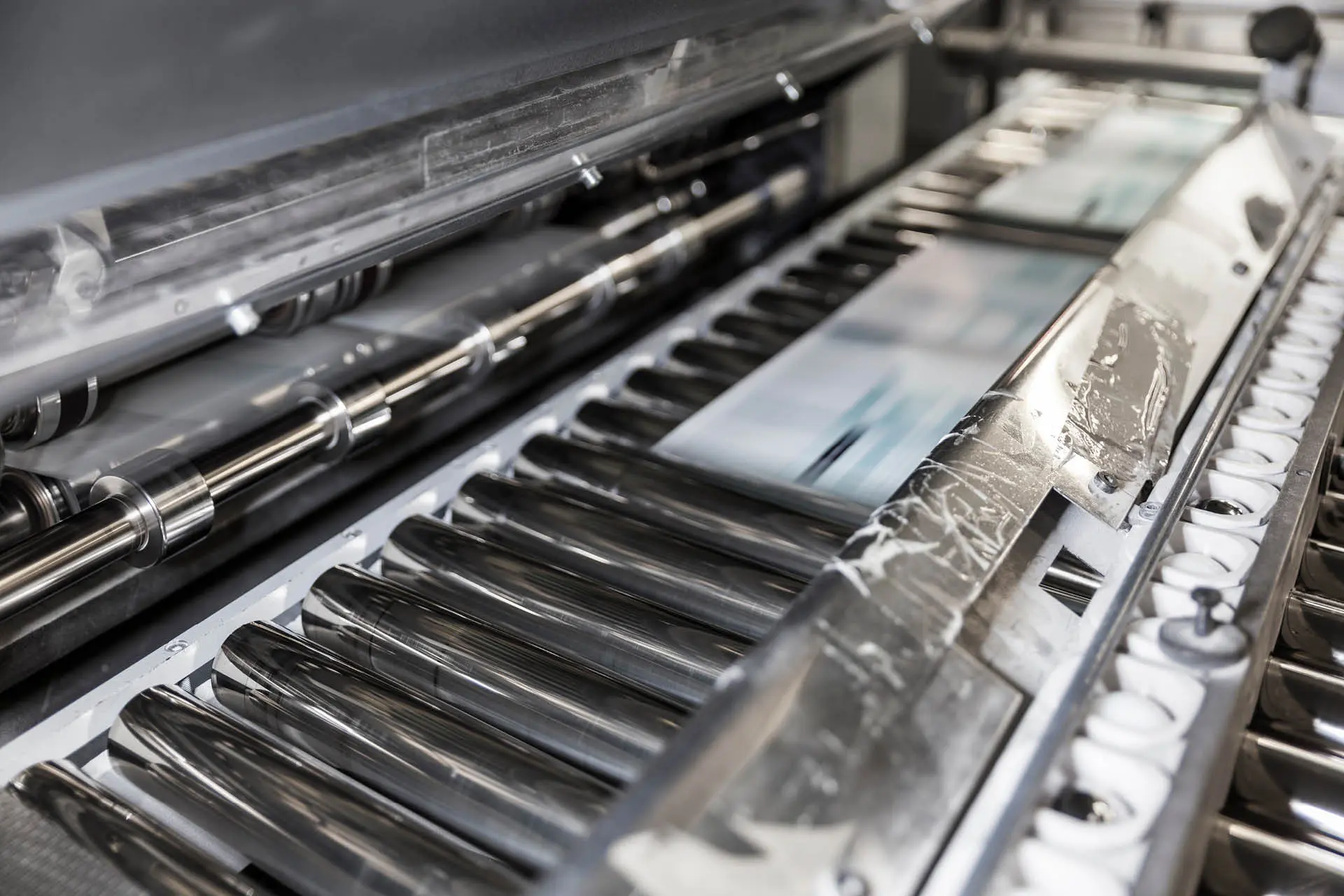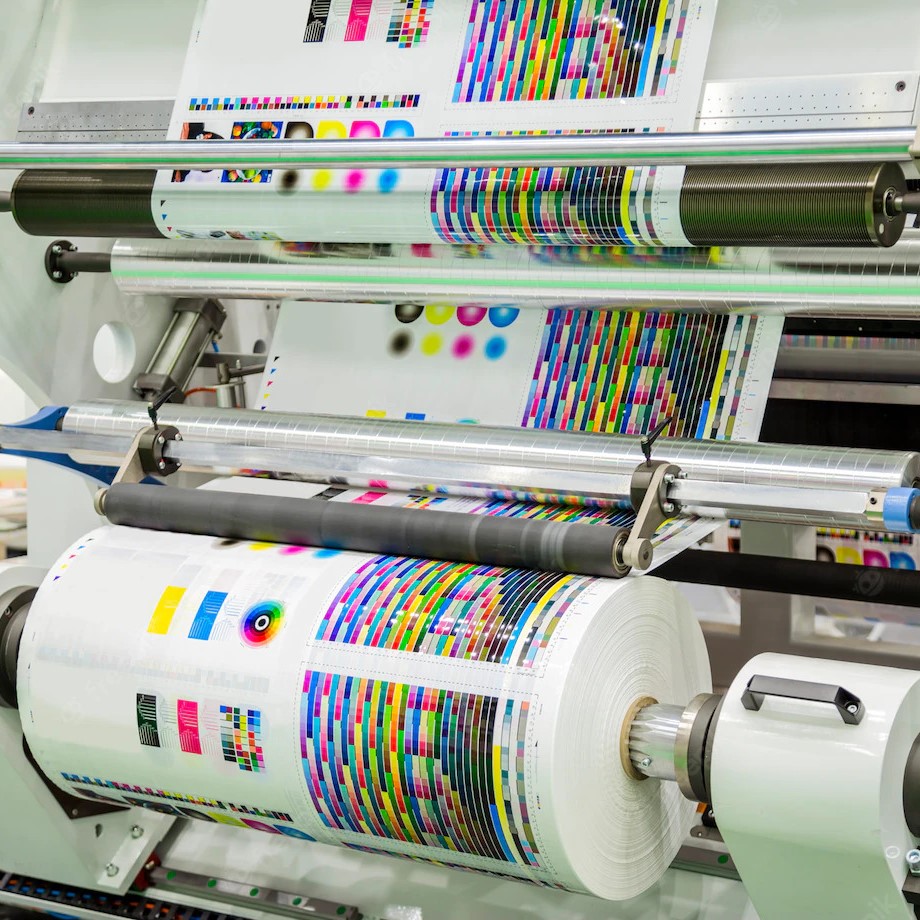The Important Overview to Comprehending Litho Printing and Its Applications
Litho printing stands as a significant technique in the printing sector, rooted in the concepts of oil and water repulsion. This technique not only provides high-grade pictures however also provides to numerous business requirements. Its applications range from marketing materials to packaging, showcasing its versatility. As the industry adapts to brand-new technologies, the evolution of litho printing elevates questions about its future and significance in a digital landscape. What exists ahead for this enduring technique?

What Is Litho Printing?
Litho printing, a widely utilized printing technique, relies upon the concept of oil and water repulsion. This approach employs a flat printing surface area, typically a metal plate, which is dealt with to guarantee that the image areas are responsive to oil-based inks while the non-image locations repel them. The process starts with the development of a photo on the plate, frequently via illustration or photographic ways. As soon as the picture is prepared, the plate is dampened with water, adhered to by the application of ink. The ink sticks only to the image locations, permitting for exact reproduction of graphics and text. Litho printing is preferred for its ability to generate high-quality prints with great information and vibrant colors. It is commonly utilized in business applications, consisting of newspapers, publications, and product packaging, showcasing its adaptability and effectiveness in meeting the needs of modern printing.
The History of Lithography
Lithography is a contemporary printing staple, its beginnings map back to the late 18th century when German playwright Alois Senefelder developed the technique in 1796. Developed as an approach for recreating messages and photos, lithography used a flat rock surface area to create prints with a chemical process. Senefelder's development enabled greater adaptability and imaginative expression compared to previous printing methods.By the 19th century, lithography got extensive acceptance, coming to be a popular option amongst musicians and authors. It made it possible for the mass manufacturing of illustrations, maps, and posters, notably influencing the printing industry. The strategy further progressed with the introduction of lithographic presses, boosting effectiveness and quality.As the industrial revolution advanced, lithography adjusted to fulfill the needs of industrial printing, paving the way for contemporary applications. Today, it remains an essential technique in numerous fields, including publishing, product packaging, and art recreation.
Exactly How Litho Printing Functions
A vital attribute of litho printing is its reliance on the concept of oil and water repulsion - litho printing. In this process, photos are moved from a flat surface area, generally a steel or polymer plate, to paper. The plate is dealt with to ensure that the locations meant for printing draw in ink, while the non-image locations repel it due to their fondness for water. The printing begins by wetting the plate with water, which abides by the non-image areas. Ultimately, an oil-based ink is used, sticking just to the designated photo areas.When the plate comes into contact with the substrate, the ink is moved, producing a print. The litho printing process can creating high-quality pictures with fine information. It is usually used for automation due to its performance and uniformity, making it a favored method for business printing applications
Advantages of Litho Printing
One remarkable advantage of litho printing is its capability to generate high-grade pictures regularly, making it a perfect selection for business projects. This printing technique utilizes a flat printing plate, ensuring also ink circulation and sharp details. Litho printing is likewise renowned for its shade precision, enabling vivid and true-to-life recreations, which is crucial for branding materials.Moreover, it sustains a wide range of substrates, consisting of paper, cardboard, and also particular plastics, improving its convenience. The process is cost-effective for big runs, as economies of scale reduce per-unit costs. Furthermore, litho printing has a fast turnaround time, permitting effective manufacturing schedules.Its sturdiness also suggests that published materials resist fading, ensuring that the end product maintains its aesthetic charm in time. Generally, these benefits make litho publishing a preferred selection throughout different markets, adding to its long-lasting appeal.
Applications of Litho Printing in Organization
As businesses progressively seek reliable and premium printing services, litho printing arises as a vital gamer in various applications. This strategy is especially favored for generating advertising and marketing materials such as brochures, flyers, and magazines, thanks to its ability to provide vivid shades and sharp pictures. On top of that, litho printing is regularly utilized for packaging solutions, permitting firms to produce captivating labels and boxes that improve product appeal.In the field of company identity, litho printing is important in generating expert stationery, calling card, and advertising product, which aid reinforce brand name recognition. In addition, it is extensively used in the publishing sector for printed materials such as publications and publications, where regular high quality is vital. In general, litho printing's versatility and performance make it an essential device for businesses aiming to communicate properly and develop a strong market existence.
Artistic Uses of Litho Printing
Litho printing acts as a functional tool in the domain name of printmaking, offering artists an one-of-a-kind approach to reveal their creativity. This technique enables a wide range of imaginative applications, from conventional prints to contemporary analyses. By exploring the nuances of litho printing, musicians can harness its unique top qualities to boost their job.

Printmaking Strategies Overview
The virtuosity of printmaking includes a diverse variety of methods, with litho printing standing out for its distinct method to picture creation. This approach relies upon the principle of oil and water repulsion, permitting musicians to draw directly onto a sedimentary rock or steel plate with a greasy medium. When prepared, home plate is moistened and tattooed, transferring the image onto paper via pressure. Litho printing is celebrated for its capability to produce fine information and abundant tonal variants, making it a preferred selection amongst artists. Additionally, the procedure is versatile, suiting both typical techniques and modern Recommended Site adjustments. This adaptability enables litho printing to bridge various creative styles, enriching the printmaking landscape with its distinct characteristics and capacities.
Special Artistic Applications
Checking out the one-of-a-kind imaginative applications of litho printing discloses its remarkable versatility in different innovative fields. Artists utilize litho printing to create complex layouts and appearances, permitting meaningful and thorough jobs. The procedure promotes the recreation of vibrant colors, making it excellent for pictures and art prints. Numerous contemporary artists embrace lithography for its ability to integrate conventional techniques with modern principles, resulting in innovative art work. Furthermore, litho printing is frequently employed in the production of limited version prints, improving their worth and appeal. The responsive quality of litho prints includes an unique measurement, attracting collection agencies and art enthusiasts alike. Generally, litho printing stays a substantial medium for creative expression, bridging classic methods with contemporary creativity.
The Future of Litho Printing in a Digital World
As the printing sector develops, litho printing deals with the challenge of incorporating digital innovations to stay relevant. Techniques concentrated on digital combination, alongside patterns in sustainability and development, will certainly form its future - litho printing. Recognizing these characteristics is important for sector stakeholders aiming to adjust to a rapidly altering landscape
Digital Combination Approaches
An expanding number of litho printing business are welcoming electronic combination techniques to remain competitive in an increasingly electronic landscape. By incorporating digital operations, these companies can simplify procedures and enhance effectiveness. This assimilation permits real-time data monitoring and improved interaction in between divisions, minimizing turn-around times significantly. Additionally, electronic devices enable better customization and customization of published products, satisfying certain consumer needs. Firms are also adopting crossbreed printing options that combine standard litho strategies with electronic technologies, offering adaptability in manufacturing. Leveraging data analytics assists in recognizing market trends and customer choices, permitting services to make informed decisions. Overall, electronic combination is becoming crucial for litho printing companies intending to innovate and react to evolving market demands.
Sustainability and Advancement Trends

Often Asked Concerns
What Products Are Generally Utilized in Litho Printing?
The materials commonly made use of in litho printing consist of aluminum plates, ink, water, and paper. Each part plays an important function in the printing my explanation procedure, guaranteeing high-grade picture recreation and reliable transfer of ink onto the substratum.
Just How Does Litho Printing Compare to Digital Printing?
Litho printing supplies superior color uniformity and quality for huge runs, while electronic printing masters short runs and modification. Each method has distinct benefits, catering to different needs based on production scale and cost-efficiency.
What Is the Normal Turnaround Time for Litho Printing Projects?
The typical turn-around time for litho printing jobs differs, typically varying from a few days to numerous weeks. Aspects influencing this timeframe consist of task complexity, amount, and needed finishing processes, impacting total manufacturing timetables.
Can Litho Printing Accommodate Custom-made Sizes and Formats?
Litho printing can certainly fit customized sizes and styles, enabling flexibility in layout. This versatility enables clients to achieve special print end results tailored to their particular demands, enhancing the total performance of their jobs.
What Are the Environmental Effects of Litho Printing?
The environmental effects of litho printing include resource usage, chemical usage, and waste generation. Nonetheless, improvements in lasting methods and environmentally friendly products are slowly decreasing these negative impacts, promoting an extra environmentally liable strategy why not try this out to printing.
Comments on “Ways litho printing Can Streamline Corporate Communications”